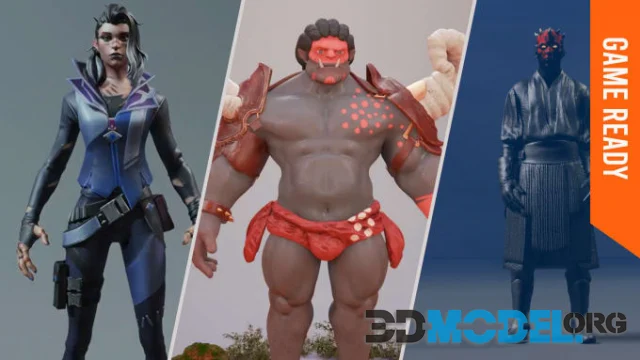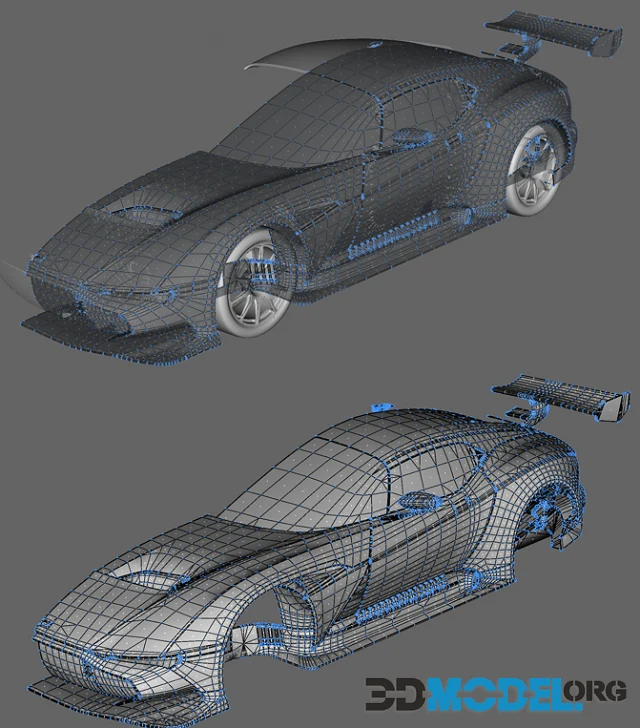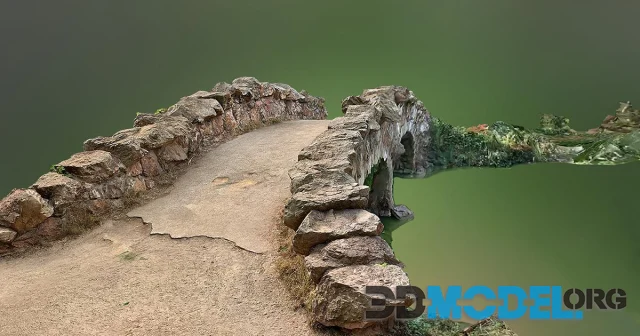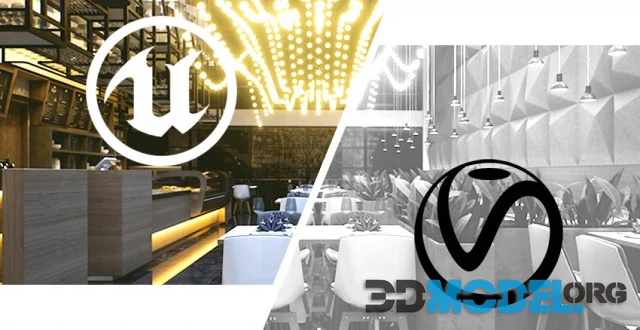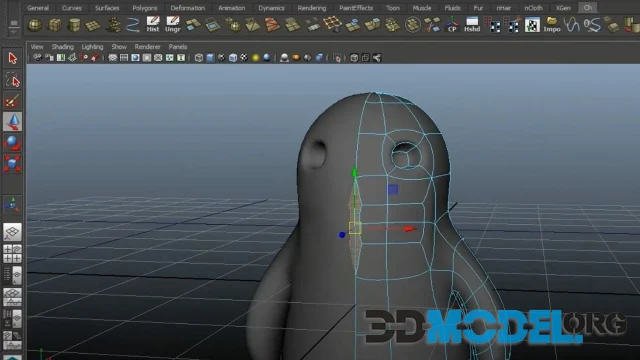3D Animation in Games - Where to Begin?
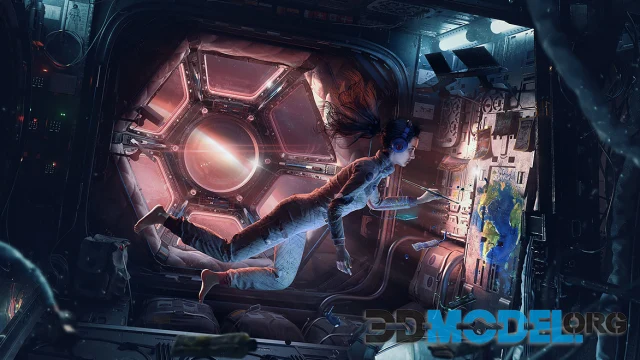
When it comes to animation for games, there are a few different techniques that you should know. One of them is motion capture. This technique is designed to help create realistic, natural-looking motion. Another technique is modeling and texturing. These two are important in creating animation for games.
If you are just starting to create your own game and need quality animations for your characters, we recommend visiting our catalog, where you can download hundreds of ready animations for popular Unity (link) and Unreal Engine engines (link).
Modeling
3D modeling is an art and science that uses computer programs to create three-dimensional models of objects and scenes. It is used in many fields, including games, animation, and special effects. Using these programs, artists can create fully animated or manually crafted objects that look much better than 2D drawings. Using 3D models is also an effective means of achieving photographic accuracy.
Modeling is a key component of many creative careers. If you want to break into the industry, learning how to model and animate in 3D is an important step. However, there is often a learning curve associated with these programs. To get started, you should consider enrolling in a college or program dedicated to learning these skills. A creative arts campus offers networking opportunities and experienced instructors who can provide advice.
As a game designer or animator, you'll need to learn how to use these programs to create realistic characters and environments. This process is a bit different from the methods used for other types of digital media. The main goal is to create realistic movements for 3D characters.
Creating a 3D character is a complicated task. You'll need to know about gestures, proportions, anatomy, and plasticity. In addition, you'll need to learn how to properly place individual vertices.
Animators will also need to work closely with 3D modelers to achieve realistic movement. Using Autodesk software, you'll be able to achieve the fine details that will make your character appear lifelike.
Another important skill to learn is how to texture your objects. Textures are extremely important for the quality of your game assets. They can be rendered using sophisticated lighting algorithms. Your textures will also play an important role in determining the atmosphere of your virtual world.
Texturing
Texturing is an essential part of the 3D animation pipeline. It involves the rendering of 2D images to the surface of a 3D object. The results are a realistic depiction of material and light effects.
Texturing can be done by hand or with the use of specialized software. Usually, artists will use a high-quality image from the web to create the texture. Some of the most popular software used for this task is Photoshop.
Another option is to create the texture procedurally, using a tool like Substance 3D. This gives you complete control over the process. You can also combine different textures to produce unique effects.
Creating a texture is a good way to give your models more life. For example, if you are working on a cartoon style video game, you can add scratches and other designs to your textures. By doing so, you will be able to define your own style.
The most important thing to remember when creating a texture is that it should be the right size and shape. This will ensure that your art looks professional and doesn't look out of place.
If you are not a skilled artist, it may be a good idea to work with an experienced team. This will allow you to gain experience and develop a strong portfolio. However, you will need to keep up to date with new tools and techniques.
Texturing and shading are the key components to achieving the desired results. The combination of the two is the best way to achieve the results you are looking for. When you are creating a 3D model, you will need to consider every exterior element.
In our catalog you can download high resolution professional PBR textures for free, ready to use in game engines. All images are completely seamless and have a set of necessary textures: diffuse, glossiness, height, normal, reflection, roughness, ao.
Character rigs
Character rigs are used to animate characters in video games. The rigging process involves building a digital skeleton for the character. This helps the rigger to control the motion of the character.
Character riggers make a separate rig for each part of the character. They work in tandem with animators to ensure that the rigs are working together.
The most basic step of the rigging process is the placement of bones. When a character is posed, the bones are placed to allow the character to move. Achieving perfect movement requires tuning the weight of the bones.
Another important component of the rigging process is the constraints. These constraints are used to restrict the position and scale of the model. Adding constraints to parts of the rig will help the animator to create a smoother animation.
Weight painting is another essential element of the rigging process. Weight painting is the process of adding and removing weights from the mesh. In addition to helping to form an accurate weight distribution, weight painting can also eliminate distortion.
During the rigging process, the rigger will use a system of hierarchical instructions to define how the character moves. This allows the animator to focus on the larger animation without having to worry about small movements.
In addition to the above, the rigger will need to understand the different software programs available for character animation. Some programs, such as Blender, are free while others, such as After Effects, require a license.
In addition, a rigging expert can help a rigger determine areas to use fewer bones. This can reduce the amount of time needed to re-create an animation.
For example, the rigger can place a circle on the character's neck to rotate the torso. Another rig may have a winking eye.
Motion capture
Motion capture is a technique that creates hyper realistic animation. It is used for a variety of applications, including special effects in movies, sports broadcasts, medical research and video games.
In order to achieve this type of motion capture, a camera is connected to computers that translate the movement of actors into a virtual character. The data is then mapped to a 3D model.
Unlike traditional animation, which requires detailed textures, motion capture is much more flexible and less expensive. In addition, it provides more realistic results.
In addition to using physical movements, motion capture can also record other elements such as facial expressions. The software and hardware used to perform this kind of motion is highly specialized.
Various companies specialize in this technology. There are two main types of motion capture: optical and magnetic. Optical systems use distinctive markers to track features in 3D. Magnetic systems, however, use smaller, less complex capture volumes.
Several Hollywood films and television shows have used motion capture. Some examples include Star Wars Episode I - The Phantom Menace (1999), Sinbad: Beyond the Veil of Mists (2007), The Polar Express (2003), A Christmas Carol (2006), and Uncharted: The Lost Legacy (2017).
One of the most important uses of motion capture is in video games. Games such as Uncharted: The Lost Legacy, God of War, and Detroit: Become Human, for example, are based on a motion capture method.
In fact, motion capture is one of the most widely used methods for creating hyper-realistic animation. Rather than relying on conventional computer animation, which creates 3D models from 2D drawings, motion capture allows for the creation of hyper-realistic digital characters.
Since the early days of computer animation, motion capture has been used in many different industries. However, the largest market for motion capture is in game development. This is because games generate more revenue than movies.
A lot of free 3D character models you can find and download in our collection - people, creatures, animals.
Other articles:
Ctrl
Enter
Noticed a misTake
Highlight text and press Ctrl+EnterRelated news:
Comments (0)

